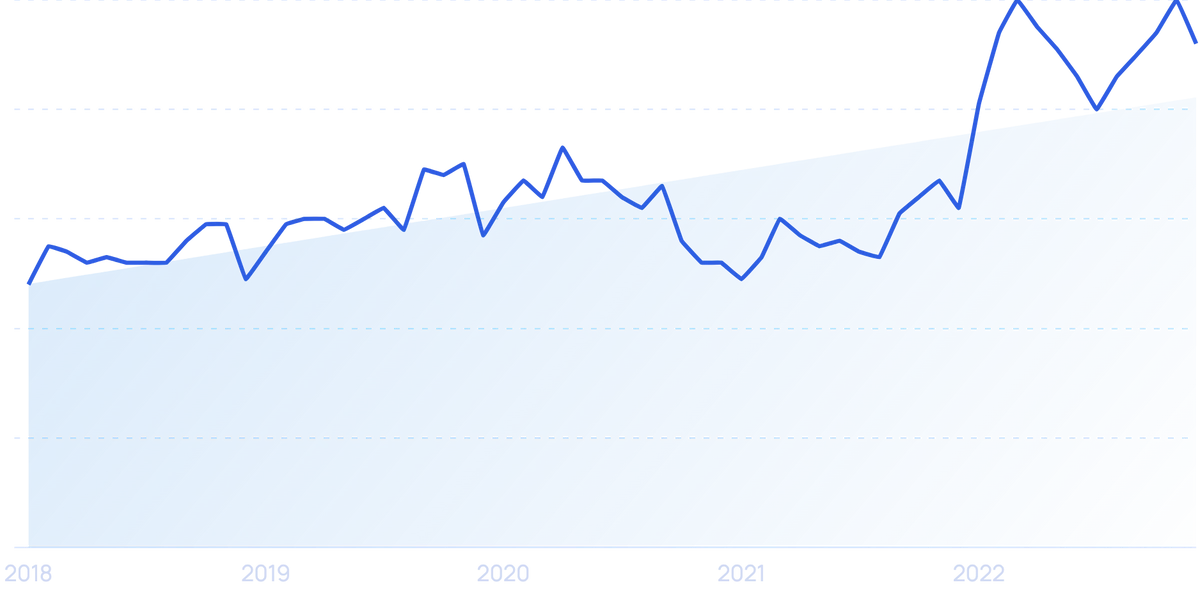Top Data Science Trends and Challenges (2024)

In the current situation, we are witnessing a highly developed and thoroughly researched form of data science that is rapidly growing and impacting every industry possible. It has significantly propelled technological advancements and exponentially boosted data production.
The fusion of human ingenuity with the power of artificial intelligence and machine learning has unlocked a world of possibilities. With the remarkable advancements in data science, we can forecast upcoming trends, identify patterns, and foresee future actions.
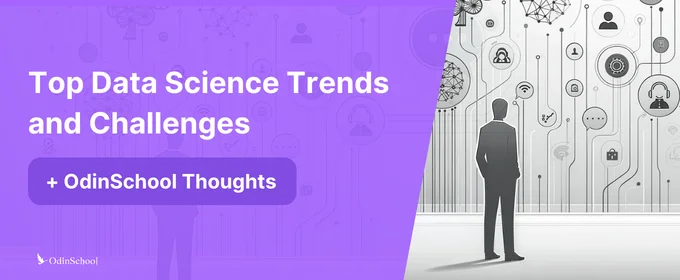
Top Data Science Trends in 2024
Here are the top data science trends significantly impacting the future.
Trend 1 - Blockchain in Data Science
In the realm of data science, the year 2024 will witness a remarkable transformation brought about by enterprise blockchain technologies. These cutting-edge advancements will enhance security and trust and streamline processes to a whole new level.
The banking industry will undergo a radical transformation with AI-backed risk management solutions. It will provide cross-chain integrations with fewer weaknesses and improved security. Moreover, Genetic algorithms will evolve, while AI-driven algorithms will strengthen blockchain networks. For data-driven decision-making, this combination will be revolutionary.
Furthermore, there will be an unprecedented rise in the advancement of smart contracts and autonomous agreements that effortlessly enhance and streamline operations.
Trend 2 - Convergence
An exciting trend that is taking shape is the convergence of diverse disciplines, fostering a synergistic approach that transcends traditional boundaries. This convergence reshapes the data science landscape, turning it into a multidimensional field. Artificial intelligence (AI), cloud computing, the Internet of Things (IoT), and lightning-fast networks like 5G lay the foundation, while data is the driving force behind them all.
We can now create smart homes, smart factories, and smart cities where IoT devices can operate autonomously without the need for human intervention. As these transformative technologies intersect in 2024, there will be a concerted effort to ensure that robust data science practices are in place to ensure seamless integration and mutual enhancement.
Trend 3 - Hyperautomation
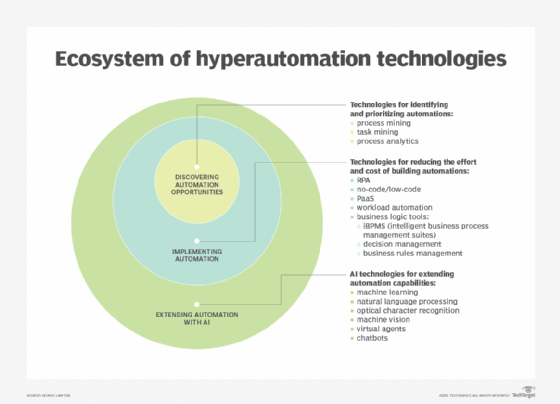
The amount of data being generated is constantly increasing, and traditional methods of data science are struggling to keep up. This is where hyper-automation comes in - a combination of advanced technologies such as AI, machine learning, and robotic process automation (RPA) to speed up the data life cycle. In essence, hyper-automation can revolutionize the way we extract value from information, not just in terms of speed but also in approach.
Tasks like data cleaning, feature engineering, and model training can be automated using RPA and low-code tools. This frees up data scientists to focus on more strategic aspects of analysis such as model design and interpretation. Additionally, automating these low-level tasks is making it easier for non-technical users to enter the field of data science.
Trend 4 - Edge Computing
As Gartner predicted, edge computing is becoming a mainstream process.
Edge computing is a revolutionary concept that brings data analysis and aggregation closer to the network. Industries are eagerly embracing the power of the Internet of Things (IoT) and data transformation services to seamlessly integrate edge computing into their business systems. This innovative approach offers enhanced efficiency, scalability, and reliability, ultimately leading to improved enterprise performance.
Additionally, edge computing significantly reduces latency and boosts processing speed, resulting in a seamless blend of cloud computing services and edge intelligence. This not only allows employees to work remotely but also enhances productivity by delivering high-quality and speedy outcomes.
Trend 5 - TinyML and Small Data
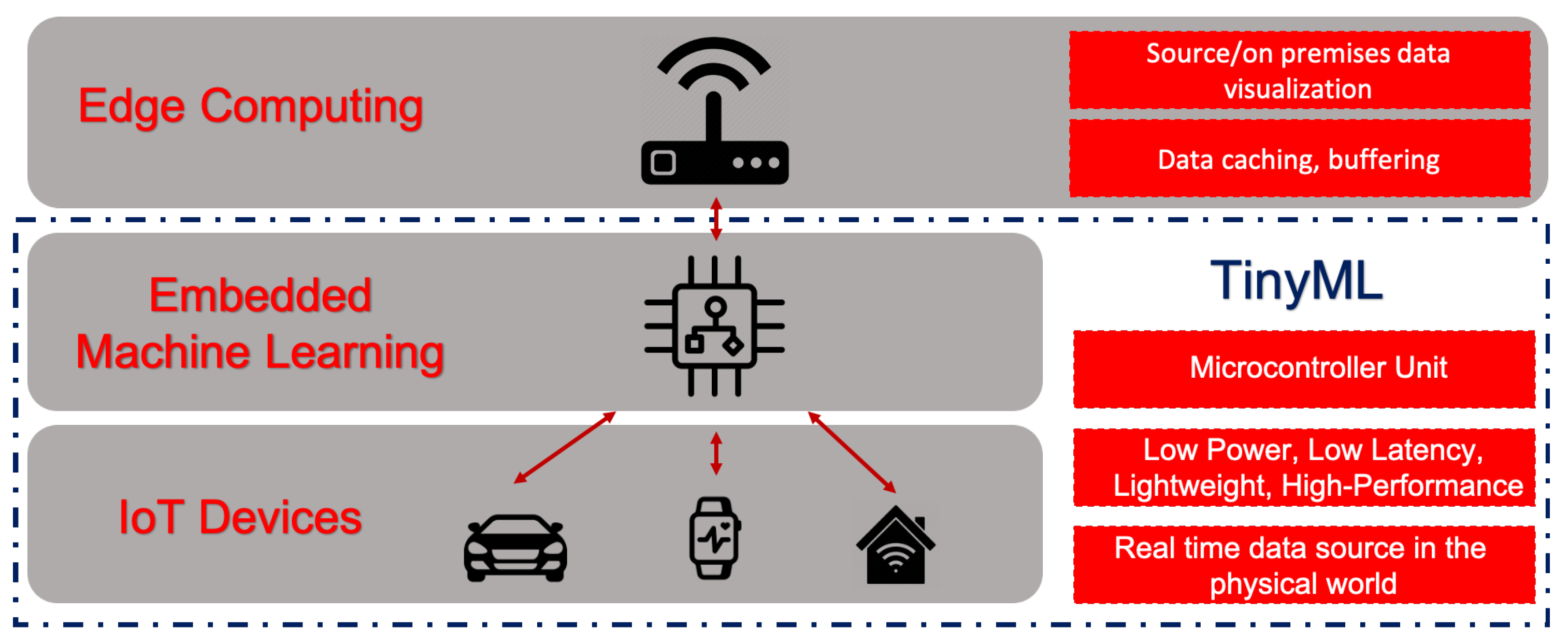
The machine learning algorithms we use to process data are not just big; they are quite large. This system has approximately 175 billion parameters, which makes it the most extensive and complex system capable of simulating human language.
While it may work well with cloud-based systems with limitless bandwidth, this is not enough for all the use cases where machine learning can be helpful. Hence, "small data" has become a means of processing data quickly and efficiently in time-sensitive situations where bandwidth is limited. This concept is closely related to edge computing. For example, self-driving cars cannot rely on a centralized cloud server to send and receive data in emergencies like avoiding a traffic collision.
Looking Ahead - In 2024, we can expect widespread adoption of TinyML algorithms specifically designed to optimize space consumption and operate efficiently on low-powered hardware. These algorithms will revolutionize many embedded systems, including home appliances, wearables, cars, agricultural machinery, and industrial equipment. This transformative technology will enhance the performance of these systems and increase their overall value and utility.
Trend 6 - More Python Applications
-
Python's automation capabilities are streamlining everything from system administration and DevOps processes to website scraping and data analysis. Businesses are realizing the efficiency gains and cost savings this automation brings.
-
Python frameworks like Django and Flask are giving traditional web development platforms a run for their money. Their speed, flexibility, and scalability make them the go-to for building modern, dynamic web applications.
-
Python's reach extends far beyond its traditional strongholds. From 3D game development powered by Pygame to research in astrophysics and bioinformatics, its versatility is opening doors across diverse fields.
Future Outlook - As Python continues to evolve and its community flourishes, expect its influence to reach even greater heights in 2024 and beyond. Python's impact promises to be transformative, from democratizing AI and revolutionizing automation to fostering creativity in education and scientific research. So, whether you're a seasoned developer or a curious newcomer, this is the year to join the Python revolution – endless possibilities.
Trend 7 - Increasing hiring spree for data analysts

The exponential data volume and diversity growth require specialized skills to manage and analyze vast datasets. Data analysts are crucial in extracting meaningful patterns and insights from these data sources, contributing to informed decision-making. The need for individuals who can navigate and analyze these extensive datasets is fueling the demand for data analysts.
Businesses are placing a heightened focus on making informed decisions based on data. As companies recognize the strategic value of data analytics in gaining a competitive edge, they seek to bolster their teams with skilled data analysts.
Future Outlook - Continuous advancements in data analytics tools and technologies will always be driving the need for professionals who can navigate and leverage these tools effectively. Employers are keen on hiring individuals with up-to-date skills to harness the full potential of available technologies.
Trend 8 - Data-Driven Consumer Experience
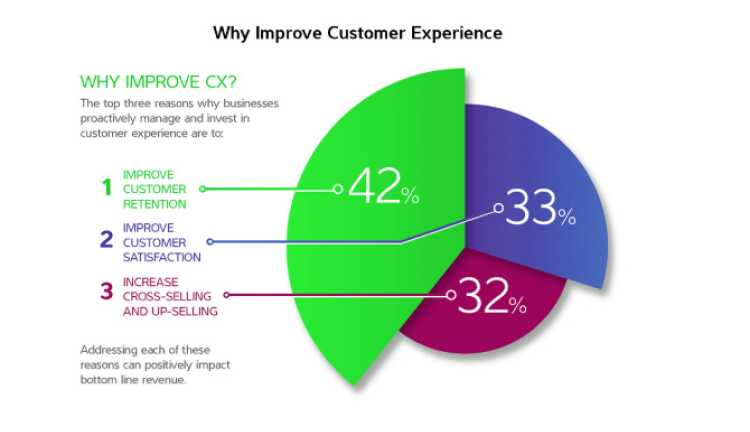
Today's consumers are savvier than ever. They have endless options at their fingertips and demand experiences tailored to their individual needs and preferences. Cookie-cutter approaches and generic marketing messages simply don't cut it anymore.
Future Outlook - Data-Driven Consumer Experience in 2024 will go beyond analytics and algorithms. It will be fueled by AI-powered empathy, where machines learn to understand human emotions, anticipate desires, and even respond with a touch of emotional intelligence.
Trend 9 - Adversarial Machine Learning
Adversarial machine learning (AML) is a growing concern in the AI community. It refers to the practice of manipulating data or models in a way that can cause an AI system to make incorrect or malicious decisions. For example, the 2023 US elections witnessed a spike in malicious deep fakes aimed at spreading misinformation and influencing voters.
Adversarial attacks can also target the sensors that AI cars rely on for navigation and object detection. By projecting specific light patterns or radio frequencies, attackers could potentially confuse the car's LiDAR, radar, or camera systems. This could cause the car to misjudge distances, miss obstacles, or even phantom-detect objects, leading to erratic driving and collisions.
Future Outlook - The arms race between AI developers and AML attackers will likely continue for many years. However, AI developers are developing new types of AI models that are more resistant and improving the security of AI systems by making them more difficult to manipulate.
Trend 10 - Large Language Models
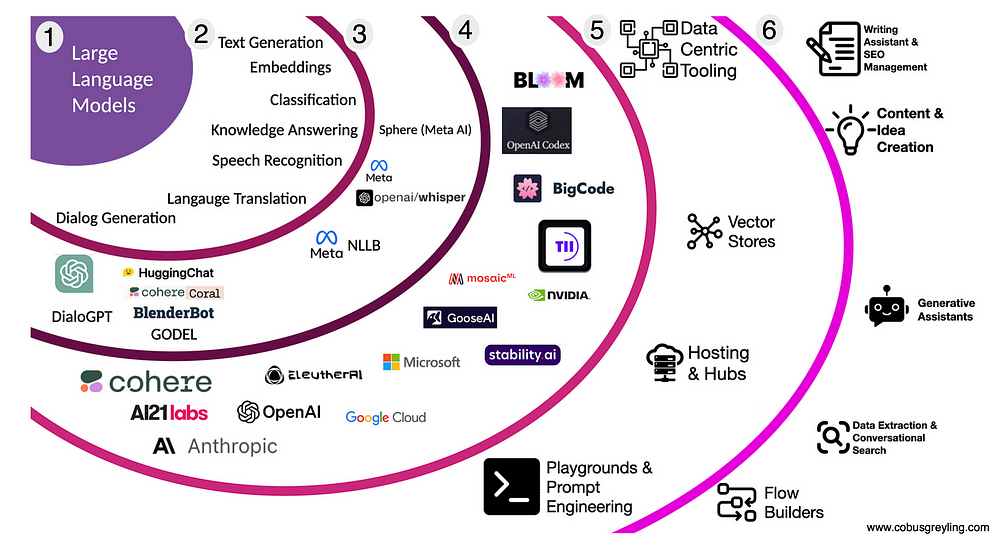
2024 marks the era of the large language model (LLM) as a game-changing trend in data science.
No longer relegated to chatbots and creative writing, LLMs are poised to revolutionize how we approach data analysis, model building, and even communication in the data driven world.
Future Outlook - The emergence of LLMs as data science co-pilots in 2024 is just the beginning of a fascinating journey. LLMs will evolve to process beyond text data, incorporating audio, visual, and even sensor data to generate richer insights and unlock new applications.
LLMs will also be integrated into closed-loop systems, analyzing data, generating models, and even adjusting parameters in real-time, automating entire data science pipelines. This could revolutionize areas like predictive maintenance or dynamic resource allocation.
Data Science Challenges

While data science trends in 2024 promise exciting possibilities, it's vital to acknowledge the thorny challenges accompanying them. Here's a peek at some potential roadblocks we need to navigate,
Challenge 1 - Ethical Pitfalls of Hyper-Personalization
The quest for ultimate personalization carries ethical baggage. Balancing tailored experiences with individual privacy, algorithmic bias, and potential manipulation necessitates careful consideration. We need robust data governance frameworks, explainable AI models, and human oversight to ensure technology doesn't exploit or exclude individuals.
Challenge 2 - Coping with the Onslaught of Data
As data volumes continue to swell, so does the challenge of effectively managing and utilizing it. Inadequate infrastructure, skills gaps in data engineering and cleaning, and the rising cost of storing and processing vast datasets are hurdles to overcome. Efficient data management tools, automation, and upskilling initiatives are crucial for harnessing the full potential of the data deluge.
Challenge 3 - Talent Crunch in The Algorithmscape
The demand for skilled data scientists, machine learning engineers, and related professionals far outstrips the current supply. Bridging this talent gap requires targeted educational programs, democratizing AI knowledge, and fostering diverse and inclusive talent pipelines to ensure everyone has access to the opportunities of the data-driven age.
Challenge 4 - The Mystery of Explainability
Black-box AI models, though powerful, can be opaque and prone to bias. Lack of explainability hinders trust and hinders responsible development. We need advancements in interpretable AI models, bias detection algorithms, and open-source code sharing to demystify the decision-making process and ensure responsible AI practices.
Challenge 5 - Safeguarding Valuable Data in the Digital Landscape
As data becomes the new oil, its vulnerabilities become prime targets for malicious actors. Data breaches, privacy violations, and AI-powered cyberattacks are all potential threats. Robust cybersecurity measures, data encryption, and user education are crucial to safeguarding valuable data and building trust in the digital landscape.
OdinSchool Thoughts: Navigating the Data Science Landscape in 2024
As we delve into the intricacies of data science trends in 2024, it's evident that the field is undergoing a profound transformation. The fusion of human ingenuity with artificial intelligence and machine learning is propelling us into uncharted territories of innovation and problem-solving.
Empowering Minds for Tomorrow
OdinSchool stands at the forefront of data science education, aiming to empower aspiring professionals with the skills and knowledge needed to thrive in the evolving world of data science.
Our curriculum is designed to impart technical proficiency and instil a deep understanding of the ethical considerations and real-world applications of data science.
Addressing the Talent Crunch
As the demand for skilled data scientists surges, OdinSchool is committed to bridging the talent gap by providing accessible and comprehensive data science course.
We believe in democratizing AI knowledge, ensuring that individuals from diverse backgrounds have the opportunity to contribute to the data-driven age.
Here are some of our success stories where individuals with different backgrounds like interior designing or big career gaps, like 16 years, could make it big in this field.
Join the Journey
Whether you're a seasoned professional seeking to upskill or a curious newcomer eager to explore the possibilities of data science, OdinSchool invites you to join our journey. As the digital landscape evolves, our commitment to providing top-notch education remains unwavering.
We don't just teach data science; we cultivate a community of forward-thinkers ready to embrace the challenges and opportunities of tomorrow.
Frequently Asked Questions (FAQs)

Is data science a good career in 2024?
Yes. Data science offers a promising and secure career path with abundant opportunities and potential for growth. With the rising significance of data-driven decision-making in various industries, coupled with the high demand for talented data scientists, pursuing a career in data science is both financially rewarding and intellectually stimulating.
What is the future of data science in the next 5-10 years?
-
Expect AI to shoulder more routine tasks like data cleaning, feature engineering, and model training. This frees up data scientists for higher-level analysis and allows non-technical professionals to leverage basic data insights through user-friendly interfaces.
-
Expect advancements in XAI techniques to make AI reasoning comprehensible, facilitating trust and ethical development.
-
Data scientists with a deep understanding of specific fields, like healthcare, finance, or climate science, will be highly sought-after to address complex challenges in those domains.
-
Prioritizing human values, ensuring responsible AI development, and addressing concerns about privacy and data security will be critical for fostering trust and preventing misuse of AI technology.
Will AI replace data science?
AI will replace the tasks but not the roles. AI will certainly automate routine and repetitive tasks traditionally handled by data scientists. So, instead of being replaced, data scientists or data science professionals will likely work alongside AI and machine learning tools as partners, forming a powerful collaborative force. AI will allow data scientists to focus more on their work's strategic and creative aspects.
Do data scientists make good money?
Data scientists certainly make good money, with the potential for very high salaries. However, the exact amount varies significantly depending on several factors like experience, location, industry and skills. Here is a detailed blog on different salaries for different data science roles
{% module_block module "widget_05c47fdb-01ef-4b2f-a1b4-8ff1267a8388" %}{% module_attribute "alignment" is_json="true" %}{% raw %}"text-center"{% endraw %}{% end_module_attribute %}{% module_attribute "button_style" is_json="true" %}{% raw %}"button fs-5 fw-semibold py-3 shadow"{% endraw %}{% end_module_attribute %}{% module_attribute "button_text" is_json="true" %}{% raw %}"Know your earning potential in Data Science"{% endraw %}{% end_module_attribute %}{% module_attribute "child_css" is_json="true" %}{% raw %}{}{% endraw %}{% end_module_attribute %}{% module_attribute "css" is_json="true" %}{% raw %}{}{% endraw %}{% end_module_attribute %}{% module_attribute "definition_id" is_json="true" %}{% raw %}null{% endraw %}{% end_module_attribute %}{% module_attribute "field_types" is_json="true" %}{% raw %}{"Spacing":"group","alignment":"choice","button_style":"choice","button_text":"text","link":"text","smoothscroll":"boolean"}{% endraw %}{% end_module_attribute %}{% module_attribute "label" is_json="true" %}{% raw %}null{% endraw %}{% end_module_attribute %}{% module_attribute "link" is_json="true" %}{% raw %}"https://www.odinschool.com/data-science/salary-calculator"{% endraw %}{% end_module_attribute %}{% module_attribute "module_id" is_json="true" %}{% raw %}113008019537{% endraw %}{% end_module_attribute %}{% module_attribute "path" is_json="true" %}{% raw %}"/OdinSchool_V3/modules/Link Button"{% endraw %}{% end_module_attribute %}{% module_attribute "schema_version" is_json="true" %}{% raw %}2{% endraw %}{% end_module_attribute %}{% module_attribute "smart_objects" is_json="true" %}{% raw %}null{% endraw %}{% end_module_attribute %}{% module_attribute "smart_type" is_json="true" %}{% raw %}"NOT_SMART"{% endraw %}{% end_module_attribute %}{% module_attribute "tag" is_json="true" %}{% raw %}"module"{% endraw %}{% end_module_attribute %}{% module_attribute "type" is_json="true" %}{% raw %}"module"{% endraw %}{% end_module_attribute %}{% module_attribute "wrap_field_tag" is_json="true" %}{% raw %}"div"{% endraw %}{% end_module_attribute %}{% end_module_block %}
